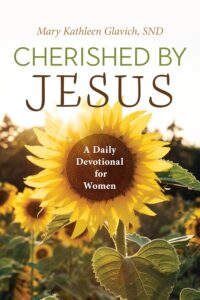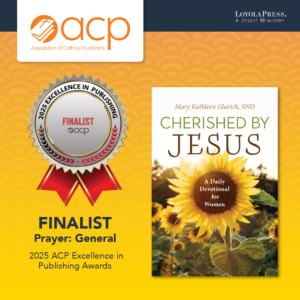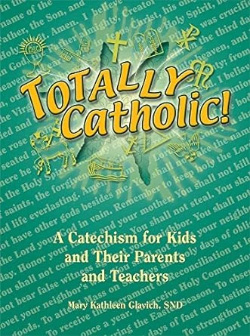Start Living in the NOW Right Now
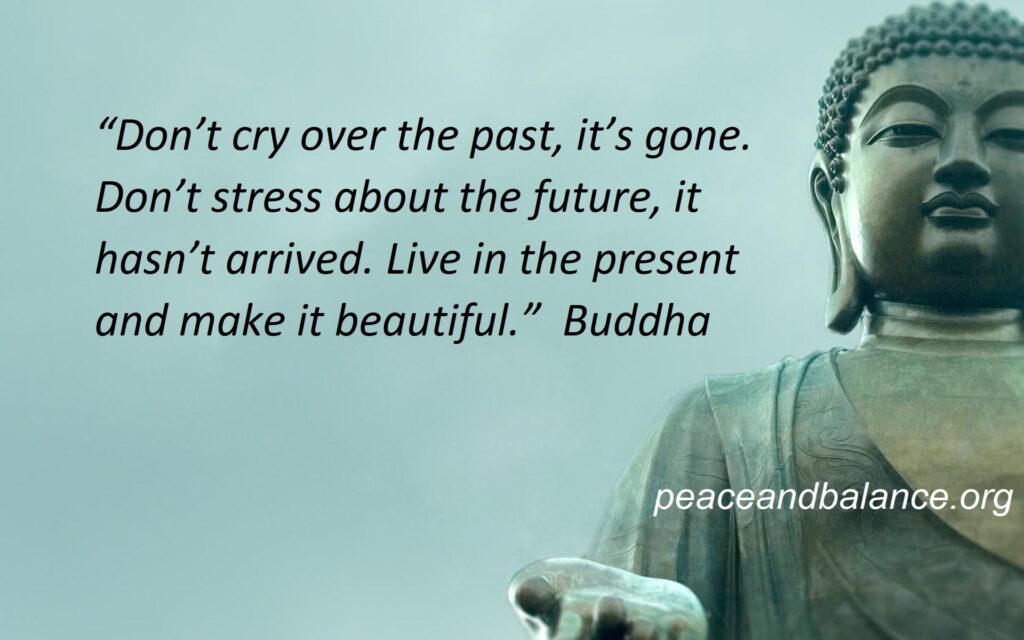
When I was a teacher, one poster I put on a bulletin board read, “Only that day dawns for which we are truly awake.” Spiritual writers recommend we focus on the present moment, a good practice to develop during Lent! A friend of mine, Roman Vaynshtok, posted an explanation of what this means and the value of it. He gave me permission to share some of it with you. Enjoy!
Living in the moment is the foundation of inner peace. It does not mean ignoring the past or future, but is the realization that they do not exist; they are our memories or imaginations. “When thinking about life, remember this: No amount of guilt can solve the past, and no amount of anxiety can change the future.” Buddha
Our past is the road that guided us to where we are now. But we can change directions at any time. Dwelling on negative images or emotions from the past could become a vicious cycle and self-fulfilling prophecies. Past is a lesson. “The past is a place of reference, not a place of residence; the past is a place of learning, not a place of living.” Roy T. Bennett
Learning to be in the moment and paying attention to the incredible world around us frees us from worries about our future. We are molding our future. When we think about the future, we worry most of the time. Worries are one of the brain’s primary functions to help us survive. By creating the worst scenarios, our brain prepares us and tries to find the best solution to events that may never occur.
Living in the moment gives us freedom from the past and the future. It allows us to experience the world and appreciate life and our surroundings fully. “If you are depressed, you are living in the past. If you are anxious, you are living in the future. If you are at peace, you are living in the present.” Lao Tzu.

How can we start living in the present? We begin with the realization that this moment we will never experience again. Living in the present is about fully experiencing the world around us. Experience without injecting thoughts into it or judgment. It means to use all our senses. For example, what information do our feet give us when we walk? How does the surface feel? What do we see? Are we seeing a reflection of the sun in the windows or a beam of light through the trees’ canopy? Is our path dry or wet? What sound do we hear is traffic, music, people conversations, or birds? What do we smell? Do we feel a breeze? How does it feel? How did it change in the next moment?
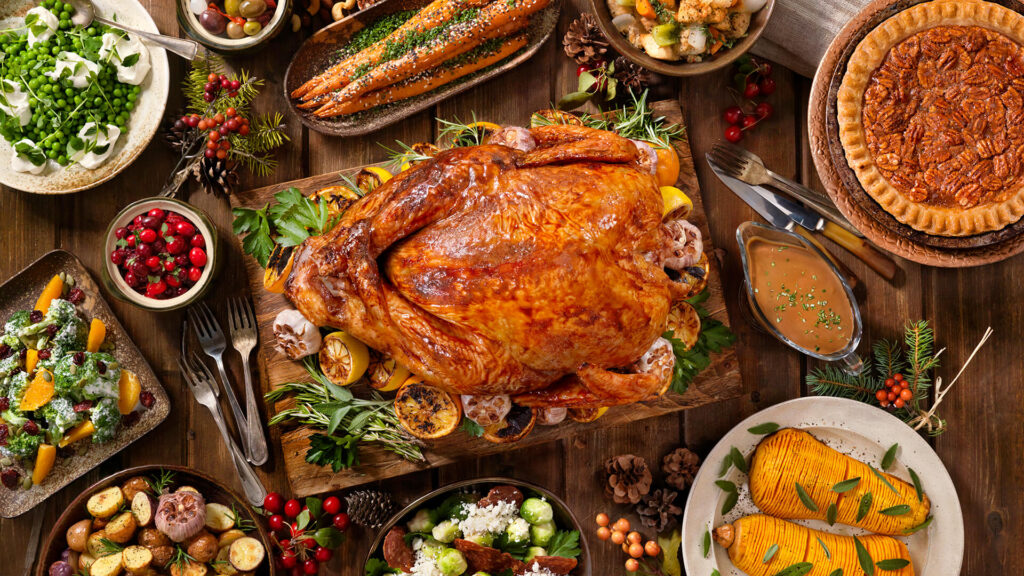
The benefit of living in the present is to experience life to the fullest, without stress. We all have busy lives and commitments during the day. But we can always take a few breaks to observe and be in the moment. We can do this during any meal. We must put away any distractions (cell phones, books, etc.) and pay attention to our food. How does it look (color, shape, size, texture, etc.)? How does it smell? How does it taste when we bite, chew, and swallow?
We can practice this in any place at any moment: Stop, then breathe and observe. Life becomes more meaningful when you realize you’ll never get the exact moment twice. Living in the present is an evidence-backed lifestyle recommended for people who struggle with anxiety and stress. When we are relaxed, it is easier to maintain an open mind and not jump to conclusions. We can make better decisions, and we develop gratefulness for our situation, friends, and loved ones.
Conclusion
It is easier to be happy when we live in the present. We learn to appreciate a little magical moment that otherwise would be ignored. We realize that life is a chain of beautiful moments that will never be repeated. Never let the sadness of your past and the fear of your future ruin the happiness of your present.
(Notice some quotations are from Buddha and Lao Tzu. When Sister Karita Ivancic and I wrote the book Ultimate Questions: How Major Religions Respond, we realized how much we have in common with other faith traditions.)
• What has been your experience with living in the present moment? Are you able to control your “monkey mind” that leaps from topic to topic?
Color, a Gift with Pizazz
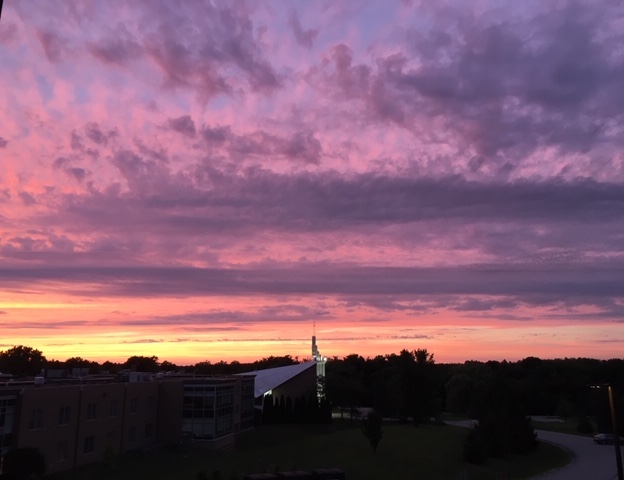
People who encourage me to get cataract surgery say that colors will become more vivid, especially purple. This has caused me to reflect on the gift of color. Imagine if our world were only black and white. How drab! I remember watching the movie the Wizard of Oz for the first time. The film began as usual in black and white, and then suddenly the screen was alive with color. How exciting! Only after I entered the convent did my family get a colored TV. I grew up with black, white, and grey cartoons.
Similarly, we Notre Dame Sisters used to wear black habits (except for the cooks and nurses who wore white habits). We progressed to wearing gray habits if we wished. Then, thanks to Vatican II reforms, we were able to celebrate God’s gift of color by our wardrobes.
What produces color? Light radiation. At night in the dark we can’t see color. In Genesis light was God’s first creation. It follows that color was the first creation.
The wavelengths of light produce different colors. Our eyes, nerves, and brains are constructed so intricately that they interpret these wavelengths as colors. Three sets of cones in our eyes enable us to see them. It’s said that on the average a human eye can detect about a million different hues—far more than the ROY G BIV of a rainbow or a box of 72 crayons. God’s extravagance is not limited to wine, bread, and fish!
White is unique. It contains all the wavelengths and therefore the entire spectrum of colors. In the West white stands for purity, goodness, and cleanliness. Recall that in the Transfiguration the garments of Jesus were whiter than any bleach could make them.
Colors affect how we feel. Warm colors like red and orange excite us, while cool colors like blue and green calm us. Wearing a red suit gives me confidence.
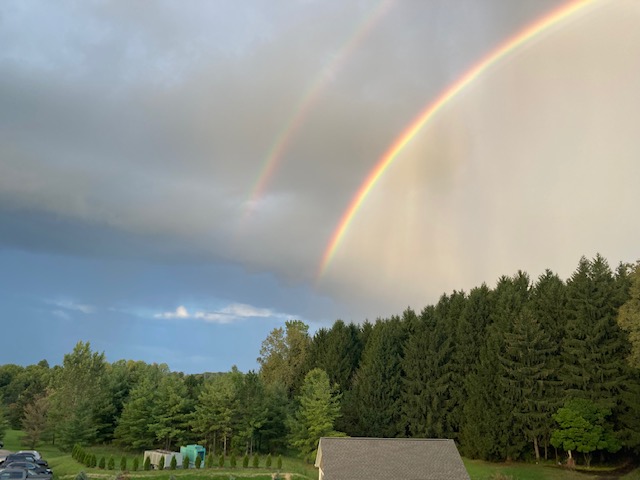
Without color we would be deprived of magnificent pink and blue sunrises and orange and purple sunsets; shimmering rainbows; the aurora borealis; beautiful gardens of red roses, yellow pansies, and purple irises; and flaming autumn landscapes. God is so good to paint our world with color. I expect that heaven will be awash with colors that we can’t even imagine.
My favorite color is blue—all shades. I think it’s God’s favorite too because he made the sky and our vast oceans blue.
• What is your favorite color?
The slides in this video are not in full resolution, but it’s still worth a look…
Practical Tips for Lent
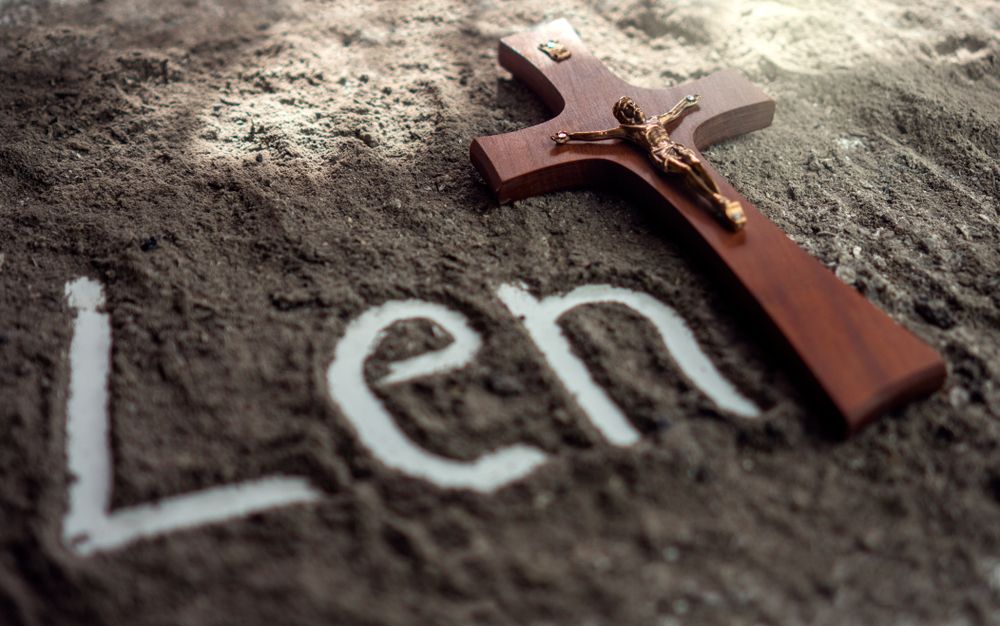
Today is Ash Wednesday, the first day of Lent. It begins six weeks of attempting to deepen our relationship with Jesus, Lent is the prelude for the celebration of his passion, death, and resurrection that saved all humankind, including you.
Usually people give up things as their Lenten practice, things like candy and TV. All of us forego eating meat on the Fridays of Lent, which isn’t much of a sacrifice for those of us who love lobster, shrimp, fish, and mac and cheese. Some people resolve to improve their life by exercising or walking outside. This is good for their physical life. Better to make resolutions that benefit our spiritual life.
Here are a ten ideas:
- Become more aware of God’s love and care for you by paying attention to signs during the day. Did you almost fall, but somehow caught yourself? Did a friend from your past call you out of the blue? Did you unexpectedly meet someone who gave you good advice or a helping hand? Each evening you might review the day and record these signs in a special notebook.
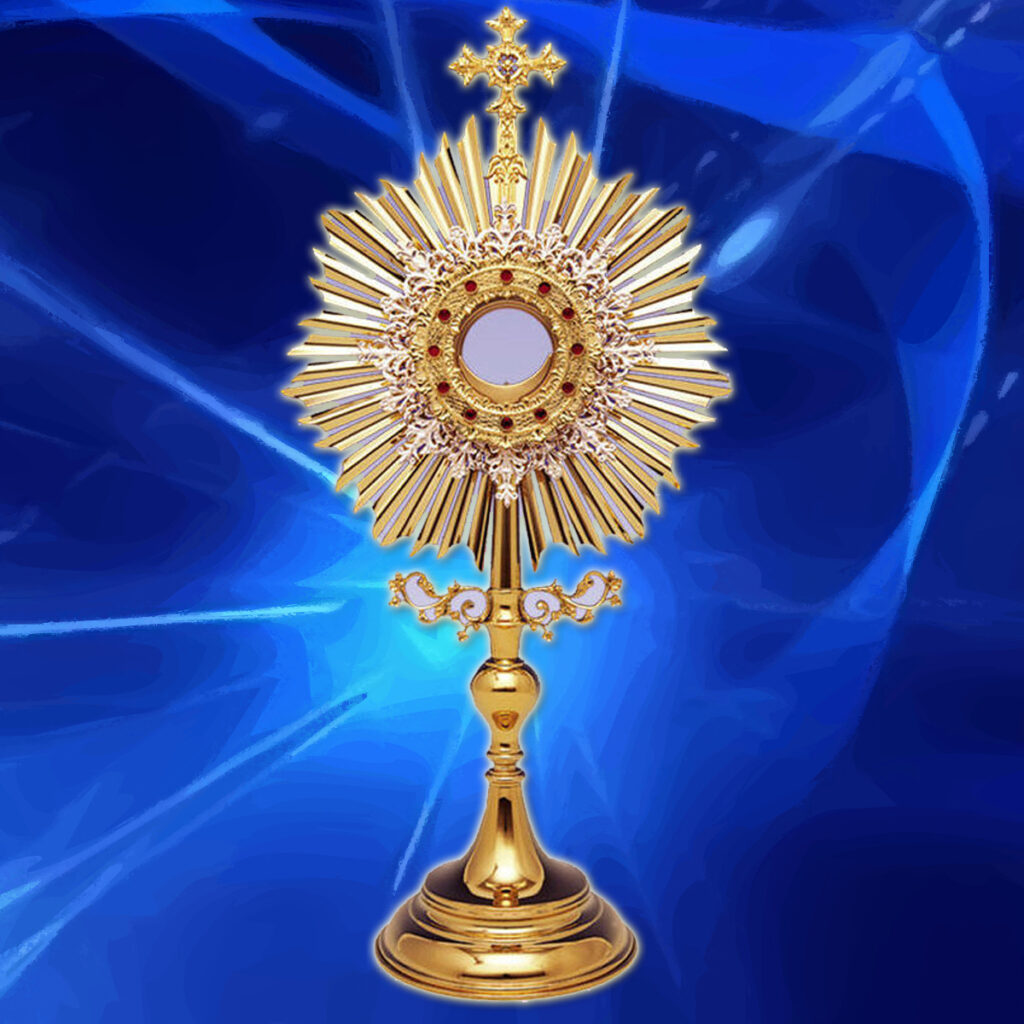
2. If your parish has exposition of the Blessed Sacrament, make time to go there and be in the presence of your Savior. Otherwise, come early for Mass or stay awhile afterward to spend extra time with him.
3. At times during the day recall God around you and within you. Decide on a clue to help you remember, like every time you open a door or drawer or walk up or down steps.
4. Make a new friend, someone you can share faith with, someone who will enrich your life and help you to be a better person.
5. Keep a Bible on your pillow and read and reflect on a short passage each day. Or join or begin a Bible study group.
6. Carve out at least five minutes each day when you will be still and silent and just give God a chance to speak to you.
7. Choose a work of mercy and practice it, aware that what you do for another Jesus regards as being done to him.
8. Find a good spiritual book or two or three and read them, for instance, one of mine!
9. Pray the rosary every day, at least a decade, remembering to reflect on its mysteries about Jesus and Mary.
10. Participate in any special Lenten programs your parish holds, maybe the Stations of the Cross.
May your Lenten practices deepen your spiritual life and bring you closer to God so that on Easter Sunday when we celebrate the glorious new life of Jesus, you are a renewed person!
Here is a moving hymn as a reminder of why we observe Lent:
• What Lenten practice would you recommend?
Books of Animal Prayers

One question people ask about heaven is Will my pet be there? My ninth grade religion teacher said, “If that will make you happy, it will be there.” Actually the jury is still out regarding the presence of animals in the afterlife. Because they do not have the same kind of souls that we do, they may not be included. On the other hand, Jesus saved all creation. And St. Francis called on all creation to praise God. We’ll just have to wait and see if Fido, Polly, and Midnight make it to the next world.
Speaking of animals, I recently published a friend’s two delightful books: Prayers from the Animal Kingdom and More Prayers from the Animal Kingdom. With a wry sense of humor, he imagined what various animals might say to their Creator (twenty in each book). They thank him for their skills, bodies, and powers, but also complain a bit. In the process, we are educated about the animals. Lovely art accompanies each prayer.
For your enjoyment, here are two samples:

Prayer of a Hummingbird
God of Beauty,
You are my creator and Lord,
the source of my beauty and speed, my versatility,
and stamina.
Though I cannot smell, I do see farther and hear better than humans.
My memory is phenomenal. Never forgot a flower or feeder I have visited.
And talk about speed, thirty miles an hour on a straight line
and up to fifty miles an hour on a sweet dive.
I truly am one of your gifted creatures.
What I love to do is play helicopter, showing off for kids
by flying up and down, sideways, and back and forth.
Geese, crows, and eagles envy me. Please forgive them.
I also love to play “bear” by hibernating when food is scarce
or when I’m exhausted. Clever, huh?
In my extended family there are 332 varieties (species).
It’s difficult to remember all their names.
I just had a baby brother, and he was the size of a penny.
We called him Charlie.
As for stamina, after getting my passport,
twice last year I traveled 2,000 miles
on my way to Central America.
Uncle Joe calls me a snowbird.
Well, Lord, you did a great job in creating me,
and I am grateful.
All I can say is the Latin phrase I learned in first grade:
Deo gratias, thanks be to God! Amen.

Prayer of a Frog
God of the land and sea,
I pause from my busy life to give you thanks
for my amphibious existence.
I call both land and water home.
(I wish you had made me ambidextrous too.)
While the sun shines, I prefer the land;
when it rains, the water.
Oh, yes, I’m often found on lily pads,
the site of my daily siestas.
Lord, at school I learned some facts of life:
I was once a tadpole; I had no lungs till later in life;
come winter my breathing, heartbeats, and muscles
will all shut down—not good news.
But, come spring, everything will be back to normal.
My teacher, Fanny Frog, reminded us
that when we get together, people call us an army,
not a flock like flighty birds,
not a herd like those dumb cows.
Lord, my Uncle Freddie said that you like diversity.
Must be true, for there are wood frogs, glass frogs, waxy monkey frogs, and in West Africa, a Goliath frog—his name is Fremont, and he’s a foot long and weighs over six pounds.
You may have gone too far in creating the poison dart frogs.
They are hurting our frog reputation.
As for our musical ability, you shortchanged us.
People laugh at our croaking.
You are forgiven.
Amen. And a half alleluia.
The two books are available on Amazon.
• What pets have you enjoyed on earth?
The Gift of Water
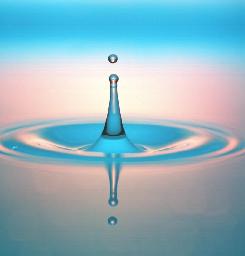
The first book I ever had published was Voices: Messages in Gospel Symbols. It contains reflections on objects in the Gospels. The following adapted chapter on water is just as relevant today.
At the well the Samaritan woman encounters someone who violates the cultural code on two counts. He, a man and a Jew, asks her, a woman and a Samaritan, for a drink. In those days men did not speak to women in public. Furthermore, the Jews and the Samaritans were enemies. Jesus offers the woman living water, water that springs up as a fountain for eternal life. After he reveals knowledge of her multiple marriages and current partner, she concludes that Jesus is the Messiah. She goes to tell her townspeople the good news and brings them to Jesus. Either in her haste or as an answer to Jesus’ original request, the woman leaves her water jar behind.
Water is not only central in the story of the woman at the well, but it is central to life in general and to Christian life in particular. Three-fourths of the world is covered by water, and plants and animals originated in the sea and evolved. We ourselves began life floating in water in our mother’s womb. What’s more, our bodies are about sixty-five percent water.
We greatly depend on water. This is demonstrated whenever thousands of people starve to death because of droughts. Water supplies energy to illumine, warm and cool our homes, and run our computers. We use it for travel and recreational activities from floating to boating. It is the basic component for cleaning our bodies and objects and the most common thirst quencher. With good reason St. Francis of Assisi prayed, “Praised be my Lord for Sister Water, which is greatly helpful and precious and pure.”
Water, moreover, is a source of beauty in oceans and ponds, waterfalls and streams, gentle rains and downpours, snowflakes, waves, and rainbows. As rain and rivers, water carves canyons; as trickles and drops, it sculpts stalactites and stalagmites; and as frost, it designs lacy patterns on windowpanes. No wonder water is an eloquent symbol.

Water awakened Helen Keller to the real world. When she suddenly connected cold water from the pump with the word “water,” she was plunged into life. Similarly, water begins the Christian’s story. In baptism, water floods us with supernatural life. It cleanses, frees, and strengthens us. We are born from water to a new life as sons and daughters of God.
God the Life-Giver likes to play with water. The Spirit hovers over the water and creation comes into being. During Noah’s time, God uses a deluge to purify the world. In Exodus, God splits the Red Sea and conducts the chosen people through it to freedom. Later, God sustains them in the desert with water from a rock after Moses strikes it.
Jesus is baptized, coming forth from the River Jordan anointed for his ministry. Water plays a starring role in his miracles. Jesus turns water into wine, calms angry waves, walks on water, and makes the Sea of Galilee yield a miraculous catch of fish. We can believe him when he offers himself as a drink: “Let anyone who is thirsty come to me; and let the one who believes in me drink” (John 7:37–38). He promises “living water” flowing from the believer’s heart, by which he means the Holy Spirit.
American author Flannery O’Connor presents the water-life theme in her story “The River.” A boy is only in the way in the apartment where he lives. His parents are more concerned with drinking with friends than in feeding him. When a babysitter takes him to a meeting at the river, he is baptized. There he matters. He is not a problem, but a person. In the end he chooses the river over the apartment. We are all confronted with the same decision: Do we choose life? Jesus makes us important. He impels us to choose life, but he never compels us.
Holy water recalls our baptism. We bless ourselves with it in church. Sometimes Mass opens with a priest sprinkling us with water. Water is blessed as holy water during the Easter Vigil. This is because the water used in baptism derives its powers from the death and resurrection of Jesus. Ever since the Paschal Mystery conquered sin, the waters of baptism, coupled with tears of repentance, extinguish the fires of hell for us.
Water is linked to divinity. Its transparency and power suggest the supernatural. Also, the awesome companions of rain, namely, thunder and lightning, draw one’s thoughts to God. Miraculous powers are attributed to water. For instance, the Ganges is sacred to the Hindus; the fountain of youth enticed Ponce de Leon to cross an ocean; and annually, thousands of pilgrims visit the healing waters of Lourdes. In addition, water exists as solid, liquid, and gas. For this reason, Christians regard water as a symbol of the Trinity.
Saints and spiritual writers have even likened Jesus to a large expanse of water. The analogy is easily drawn. Jesus is our life, the medium in which we thrive. Apart from him we die, like a fish out of water. He buoys us up more than we realize. Jesus is the all-encompassing sea of peace, an ocean of love. To drown in him is to live.
Water is ordinary and taken for granted. Restaurants serve it free of charge. It flows at the flick of a wrist from our faucets. Graces are just as available. Reviewing our graces (counting our blessings) at the close of each day makes us more attuned to God’s presence in our lives. Equally important is praying for particular graces for ourselves and others. This is like priming a pump. It starts the graces flowing into our lives.
Water is associated with daily chores like doing laundry, washing the car, sprinkling the lawn, and cooking. Much of our day is spent on seemingly inconsequential activities. St. Thérèse of the Child Jesus showed us that sanctity is possible through the little things. When another Sister splashed her with water or rattled rosary beads, Thérèse responded with silent endurance. When she experienced a natural dislike for a grumpy Sister, Thérèse went out of her way to be nice to her. This “little way to heaven” that the saint promoted is reassuring.
Imagine how many trips to the well Mary made and how many meals Jesus prepared. When we carry out humdrum tasks well, especially when we do them for someone else, we are being saintly.
Water takes the shape of its container. To be life-giving to others, we have to fit ourselves to their needs. Like St. Paul, we are to strive to be all things to all people. To become the disciples Jesus calls us to be, we must adapt to the young and the old, conservative and liberal, the rich and the poor, the Jehovah’s Witness, the unchurched, and the next-door neighbor.
Water teaches us that in unity there is strength. Of itself a droplet can do little for good or for evil. But joined together in a waterfall, droplets can generate enough electricity to light a city. In an ocean, droplets can erode mountains. In a flood, they can destroy towns.
We come before the Creator as a people, gathering for Eucharist and for parish programs. Through service groups like those who deliver meals to families in need, parishes are recapturing the Church’s original spirit of unity.
Giving water to a thirsty person is not just an act of courtesy. Jesus says, “[W]hoever gives even a cup of cold water to one of these little ones in the name of a disciple—truly I tell you, none of these will lose their reward” (Matthew 10:42).
We do our best to satisfy others’ thirsts though we may be imperfect like the water jar in this parable “The Cracked Pot”:
Every day a man carried a pole on his shoulders to bring home water from a stream. On one end hung a cracked pot, and on the other end was a flawless one. On the return trip, water always leaked out from the cracked pot. One day on reaching home, this pot spoke.
“Master, I’m so sorry I am not doing a good job. Every day I lose a lot of the water you want me to carry.”
“Dear pot,” replied the Master, “look behind us.”
There all along the side of the path where the cracked pot had leaked water, flowers bloomed.
Jesus himself sometimes needed a drink of water. Before he died, he said from the cross, “I thirst.” Implied is a request beyond the physical level. Who of us will quench the Master’s thirst?
Enjoy this video and relax a bit….



